Every year vegetation fires occupy more inches in the media. And is not for less. Along with greenhouse gas emissions and the extinction of species, forest fires have for decades become one of the great threats to the Earth’s climate system and therefore to the life that develops on it.
These fires, some of great proportions, are characterized by their enormous destructive capacity by devastating jungles, forests, urbanizations and causing the displacement of thousands of humans and the death of a large number of animals. Among its damaging effects is also air pollution in places near and far.
For this article we have selected three regions: Australia, Brazil, and California, due to their common characteristics such as the voracity and frequency of their forest fires, but also the differences between the causes and nature of their fires.
The alteration of the vegetation cover is one of the nine limits of the Earth, established by Johan Rockström and Will Steffen, together with a team of scientists from the Stockholm Resilience Center, between 2009 and 2015. It is “a list with nine limits of the planet that would be extremely dangerous to cross, something that has already occurred in the case of four of them”, according to a UNESCO report. Including these four limits is the alteration of the vegetation cover, which indicates the importance and seriousness of the matter that we will deal with today. The two main factors of this alteration are deforestation and vegetation fires. The latter is the issue that we address here.
Australia, extensive fires and deadly for wildlife
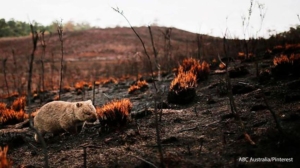 While it is true that forest fires have always existed in Australia, the fires that started in 2019 continued well into 2020, surpassing similar phenomena in previous decades.
While it is true that forest fires have always existed in Australia, the fires that started in 2019 continued well into 2020, surpassing similar phenomena in previous decades.
The magnitude of the fires was so great that it devastated larger areas than Costa Rica, or Denmark and the Netherlands together. In New South Wales alone, more than four million hectares were burned, a figure that exceeds the fires that occurred in 2018 in California of 1.8 million hectares, and recently those in the Amazon in 2020, equivalent to 900 thousand hectares.
Scientists affirm that the main cause of the fires in Australia is due to global warming, which in 2019 marked a record temperature, with an average of 41.9 ºC and peaks close to 50 ºC.
In 2007 the World Wide Fund for Nature (WWF) reported on the impact of clearing and deforestation in the Australian state of New South Wales.
The warm environment prepares the ground for large fires year after year. The extreme drought, due to the high temperatures, make the vegetation the ideal fuel for the most varied starters of fires. Among these, electrical storms and power lines are the most frequent.
The fires in Australia, between 2019 and 2020, were a succession of ignitions that developed in large territories of the country, between June 2019 and May 2020. According to Wikipedia, the fires devastated about ten million hectares, destroyed more than 2,500 buildings, and caused nearly thirty casualties, in one of the worst fire seasons ever recorded, although the 1974-1975 fires consumed 117,000,000 hectares. An estimated 1 billion animals were affected by the fires. The figure does not include insects or other invertebrates vital to forests.
Brazil and its intentional fires
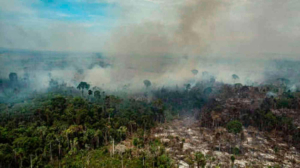 After the devastating fires in the Brazilian Amazon made headlines around the world for long weeks over the past year, alarms have now been sounded again. In July 2020, 6,803 fires were registered against 5,318 in July 2019, an increase of 28%, as reported by the National Space Institute of Brazil. All this aggravated by the coronavirus, which has diverted attention from what is happening in the Amazon.
After the devastating fires in the Brazilian Amazon made headlines around the world for long weeks over the past year, alarms have now been sounded again. In July 2020, 6,803 fires were registered against 5,318 in July 2019, an increase of 28%, as reported by the National Space Institute of Brazil. All this aggravated by the coronavirus, which has diverted attention from what is happening in the Amazon.
This figure gives us an average of almost 230 fires a day, most of them set to clear land to be used for illegal agriculture, livestock, and mining. The Space Institute also reported that 1000 fires were registered on July 31 alone. A thousand in a single day! Just a month before writing this article.
The Amazon is a tropical rain forest, whose original humidity did not allow any type of fire. But sadly, it goes the same way as the Borneo rainforest. The great forests of Southeast Asia have suffered hostile deforestation since the 1970s, to the point that local climate change has occurred in their area of influence. There are experts who argue that the fires in Australia, in part, were caused by the clearing of the forests of Borneo, more than three thousand kilometers away. Borneo is the third largest island in the world, shared by Indonesia (72.6%), Malaysia (26.7%) and Brunei (1%).
In the case of the Amazon, if deforestation and fires continue at this rate, it would have much more serious consequences, since the great South American rainforest is ten times larger than the Borneo rainforest. Because of its size, it is considered the lung of the world. Its destruction would bring situations difficult to imagine across the planet.
Tropical rainforests play a key role in the water cycle, as they are large reservoirs of moisture and hydrological networks. Plants release water from their leaves during photosynthesis, adding a large amount of the vital liquid to the atmosphere. The continuous cycle of evaporation, cloud formation and rainfall contribute to maintaining the vegetation cover in the forests themselves and in large areas of influence, avoiding drought, water shortage and desertification.
In the case of the Amazon rainforest, with its seven million km2, the rains not only irrigate its forests but also much of the South American continent, including the Andean mountain range and the Argentine pampas. The Amazon is shared by nine countries, of which 60% correspond to Brazil. Deforestation of the Brazilian Amazon is long-standing and has been practiced by all governments since the 20th century.
The Amazon is also one of the largest carbon sinks in the world. We know that trees produce oxygen, a vital element for most species, and in turn absorb carbon dioxide (CO2), the largest component of greenhouse gases, causing global warming and its consequence, climate change. During photosynthesis, a process carried out by trees and a large part of plants, they absorb and store CO2, which is fixed in their roots, trunks, and leaves in the form of carbon. Plants take oxygen from the air and re-enter CO2, the final balance being positive in favor of the extraction of CO2 from the atmosphere. The absorption capacity is proportional to the size, density and quantity of plants and trees present in a forest.
SGK-PLANET, in its Climate Magazine, all about the Amazon, has documented a large amount of information about the South American rainforest, so that our followers can learn how this gigantic biochemical machinery works. Through this work we have identified twelve factors with which our essential Amazon is being destroyed.
California: wildfires on the rise
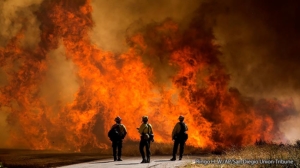 California, USA, has always been prone to wildfires. However, since the 1980s the extent and intensity of fires have multiplied, a trend that for now does not seem to be reversing. According to National Geographics, 15 of the 20 largest fires have occurred since 2000. Since the 1970s, California’s burned area has increased five-fold. The area razed during the summer of 2018 was eight times that of the annual average of 1970s.
California, USA, has always been prone to wildfires. However, since the 1980s the extent and intensity of fires have multiplied, a trend that for now does not seem to be reversing. According to National Geographics, 15 of the 20 largest fires have occurred since 2000. Since the 1970s, California’s burned area has increased five-fold. The area razed during the summer of 2018 was eight times that of the annual average of 1970s.
According to scientists, the main cause of this increase is climate change. Warmer air causes drought, which makes trees and other plants burn more easily. In the last century, California’s temperature has increased by about 1.6 °C, higher than the global average of 0.5 °C.
The major fires that have devastated the state in recent years have occurred in the fall, after long, hot summers that suck moisture from the vegetation before the rains begin. Due to delayed rainfall, which arrives in November and even December, the fire season has been extended by 75 days in recent decades. The dry seasons, coupled with the seasonal winds, have made the flames spread strongly and difficult to control.
This cyclical situation has produced millions of dead trees that have become a huge source of fuel for fires. This is the main reason why fires have become more voracious and widespread in recent times, as well as making their extinction more and more difficult.
The extreme dryness of the vegetation opens a range of causes of fires in California. A lit cigarette butt, a piece of glass, a badly extinguished campfire, an intentional act of a pyromaniac, are just some of the many origins of these great fires originated by humans.
According to information from EFE, the international news agency, from 08-19-2020, California has been affected in recent days by 10,800 lightning strikes, which fell in just three days, causing 367 new fires, according to the state’s Department of Forestry and Fire Protection.
In 2019, the fall of cables and transformers suspended over wooded areas, due to the effect of strong winds, was the origin of one of the two deadliest fires of this century in California. Sparks from electrical conductors falling on dry vegetation are one of the most common causes of fires in California. The service provider company has had to resort to preventive power outages on many occasions, affecting thousands of homes and millions of people.
2017-2018. “California has been in a drought for five years,” according to Steve Kaufmann, spokesman for Cal Fire, the California Department of Forestry and Fire Protection, quoted by the newspaper El País on November 19, 2018. Kaufman reported that in the county of Ventura experienced the largest fire in the history of the State, which would be overcome only eight months later. “To give a simple explanation: in this area of California it has not rained for 214 days.” The land in the Paradise area, located at the foot of the Sierra Nevada in the Sacramento Valley, is extraordinarily dry. The catastrophic fire caused 76 deaths, more than 1,200 missing and 12,000 buildings destroyed.
Conclusions
The three regions that we have discussed are just a sample book, an example of what is happening on Earth. There are other nations and territories that have large fires such as the Arctic, China, Canada, Chile, Spain, Greece, Indonesia, Italy, Portugal, Republic of the Congo, Siberia, and South Africa.
Due to its seriousness, this situation cannot be reduced only to media headlines or the noble work of firefighters. In these countries the fires break out every year and are slowly degrading the planet’s soils. The worst thing is that far from diminishing, the fires are increasing each year in extension and intensity.
This situation that is happening in front of the eyes of those of us who live on this blue planet is serious. If the underlying problem is not addressed, these fires will have a highly destructive effect, which will involve a further increase in world temperature, water scarcity and the globalization of drought.
Deforestation and fires can lead to the desertification of the Earth, with crop losses, food shortages, famine, and global thirst. The environmental chaos, if the corrections are not taken in time, will acquire the level of a pandemic, but it will cause many more disasters than the current viral pandemic.
Sandor Alejandro Gerendas-Kiss
480M animals potentially killed in Australia wildfires
The World’s Largest Tropical Wetlands are on Fire
More Than 500 Wildfires Burning in California

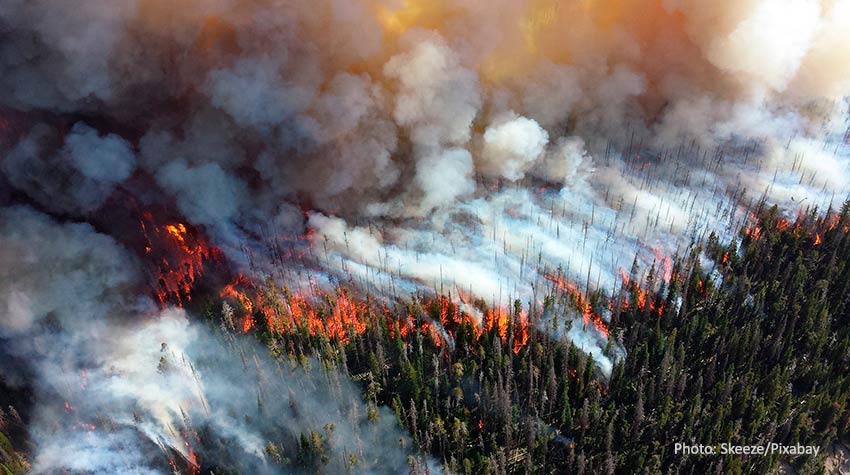
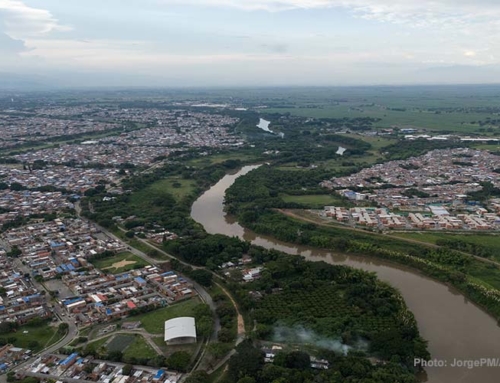


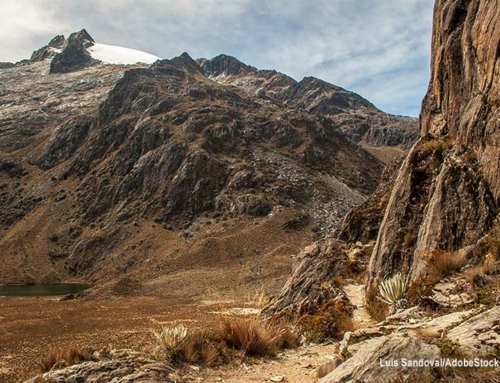

Leave A Comment